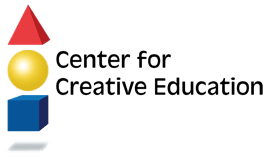EDUCATION THROUGH THE ARTS
TRANSFORMING TEACHING AND LEARNING THROUGH CREATIVITY AND THE ARTS
WHAT IS ARTS INTEGRATION?
Arts integration is a teaching approach that uses arts as the method for teaching with learning objectives in both academics and the arts. For example, first graders learning about story elements (characters, setting, plot, and theme) would do so by learning storytelling through a theater dramatization. Each student participates in the activity, using theatrical techniques such as role-play and improvisation, employing their imagination as a boxful of simple scarves or fabric scraps become “elaborate” costumes, and they design the story incorporating all the elements by acting it out together. The teacher and/or Teaching Artist guides the students’ learning by naming the elements and reinforcing both areas of learning in this hands-on, meaningful way.
WHY ARTS INTEGRATION?
Studies have shown that when implemented with integrity, arts integration impacts students on many levels. According to Educational Leadership, American Institutes for Research (AIR) conducted a review of evidence study which “provided evidence that practicing arts integration in a school positively affects students’ outcomes in several academic areas, in addition to improving attendance, behavior, and social skills” (December 2018/January 2019 edition, “Arts and Creativity in Schools”). In her article, “A View Into a Decade of Arts Integration,” Amy Duma cites evidence to support how arts integration enhances student engagement in these ways:
-
-
- Connects them to authentic learning that matters to them
- Provides opportunities for all learners—even struggling learners—to be successful
- Develops feelings of self-efficacy
- Increases intrinsic motivation to learn, and
- Develops students’ abilities to apply learning to new situations and experiences. (Journal for Learning Through the Arts, 2014)
-
